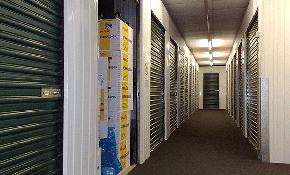SAN FRANCISCO-The local economy is extremely strong, once again driven by the tech sector. This recovery is driven by large highly profitable companies—Apple, Google, Facebook, etc., as well as a vibrant participation by smaller newly founded companies in the social media arena. That is according to Stanford Jones, EVP of Institutional Property Advisors, a division of Marcus & Millichap. “The job market is extremely healthy and as a result the rental market is experiencing strong occupancy and rental growth. Occupancies are 96% to 98% with rent increases expected to be 6% to 10% in 2014 in various submarkets.”
Jones will serve as a panelist at the upcoming RealShare Bay Area half-day conference held September 11th at the City Club in San Francisco and recently chatted with GlobeSt.com about the area’s multifamily market. In terms of opportunities, he notes that “Buyers are moving to the fringe areas to harvest higher yields. They are also, accepting low yields for the older assets in the stronger core locations with anticipation of trending the yield up sharply by implementing the add value play.”
Another trend Jones sees is that after many years of talk about transit-oriented locations, it is now becoming critical because of explosive traffic congestion, he tells GlobeSt.com. Urban locations, he says, are also very desirable. “There are developments like Santana Row in San Jose which are creating their own urban environment. There is no question the migration to urban type of living is having an impact on renters choices.”
On the multifamily investment side,REITS, entities with discretionary funds, high net worth individuals and partnerships, family shops and foreign investors are the ones buying. “The pool has thinned out recently due to the perception we are later in the rent growth cycle,” he explains. “Rising interest rates is now having an effect on the cash flow and IRR investors. The increase borrowing rates is putting downward pressure on the prices they can pay for these low yielding assets.”
The pipeline for new multifamily investment, he says, is more active than any time in the past 30 years. “There are approximately 35,000 units in the pipeline which will be delivered in the next 36 to 48 months. This pipeline has been very anemic in the past four years.”
As for rents, the recent explosive rent growth has given the developers the opportunity to move forward on projects, Jones explains. “Given these high rent levels, the question is will they hold up through the depth of this extensive delivery of new units.” According to Jones, rents will remain very strong in the next six months with very low vacancies, but the bigger question, he says, is can the pool of renters afford the new much higher market rents and what will happen 24 to 36 months out when the delivery of new product hits the market?
We also recently chatted with fellow multifamily panelist Gregory Vilkin, managing principal and president of MacFarlane Partners on the subject. To view that exclusive Q&A, click here.

















 Copyright © 2024 ALM Global, LLC. All Rights Reserved.
Copyright © 2024 ALM Global, LLC. All Rights Reserved.